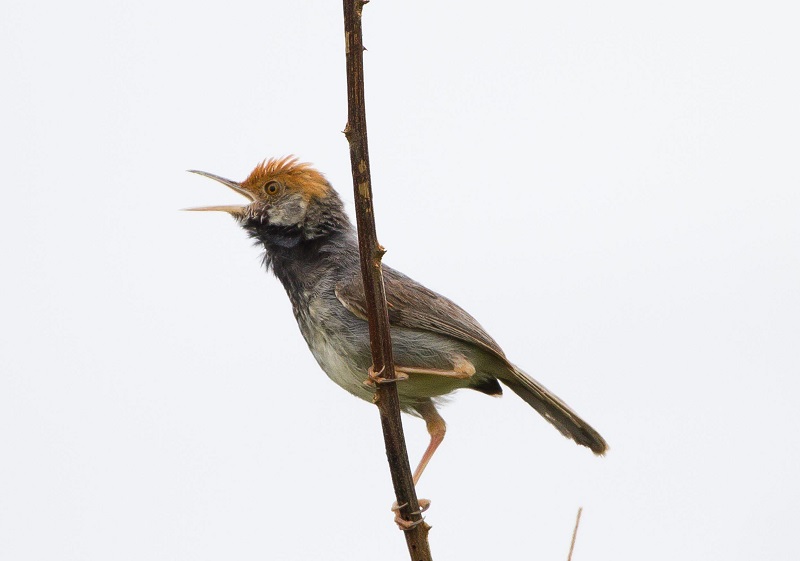New Noisy Bird Discovered in Busy City


Despite its loud call, a new bird species has only just been discovered in Cambodia's capital city of Phnom Penh, scientists announced yesterday (June 25).
Dubbed the Cambodian tailorbird (Orthotomus chaktomuk), the wren-sized creature has a red cap, gray-to-olive wings, and a black throat. It joins the Cambodian laughingthrush as the only bird species unique to Cambodia, according to the Wildlife Conservation Society (WCS), whose scientists helped make and describe the find online in the Oriental Bird Club's journal Forktail.
While the laughingthrush is only found in the remote Cardamom Mountains in the southwest part of the country, the tailorbird prefers the city of 1.5 million. The noisy new species was found in dense, humid lowland scrub in Phnom Penh and other sites in the floodplain where the Tonle Sap, Mekong and Bassac Rivers come together, according to WCS officials. It was also documented in other locations just outside of the city, including a construction site and a dense conservation area where other bird species enjoy protection.
"The modern discovery of an undescribed bird species within the limits of a large populous city — not to mention 30 minutes from my home — is extraordinary," WCS researcher Simon Mahood said in a statement. "The discovery indicates that new species of birds may still be found in familiar and unexpected locations."
Mahood and the other researchers warn that the bird's habitat is declining and at risk of shrinking further due to agricultural and urban expansion. The team recommends that the tailorbird should be classified as a "near threatened" species under the Internaional Union for Conservation of Nature's Red List of endangered and threatened species.
An increase in exploration in Southeast Asia means that several new bird species have been discovered in the region in recent years, including the bare-faced bulbul, the Mekong wagtail and several varieties of babblers in Vietnam, WCS officials said.
Follow Megan Gannon on Twitter and Google+. Follow OurAmazingPlanet @OAPlanet, Facebook and Google+. Original article at LiveScience's OurAmazingPlanet.
Get the world’s most fascinating discoveries delivered straight to your inbox.



